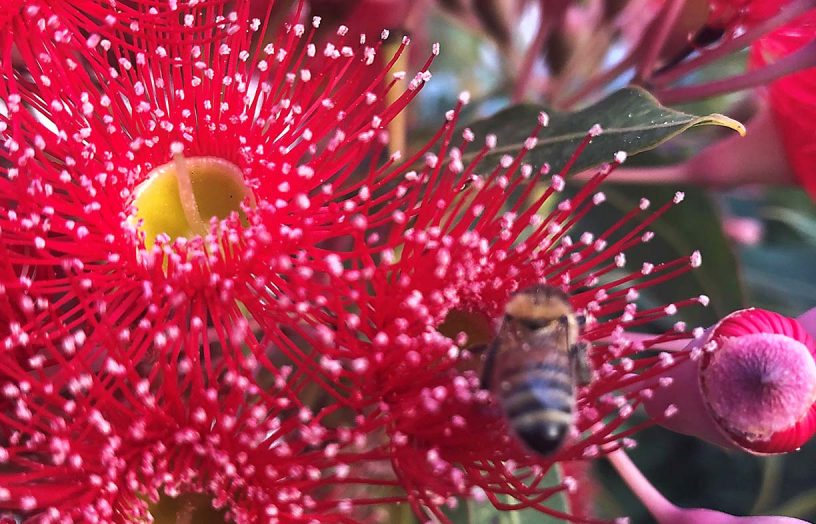Rainwater harvesting: keeping it clean

You might expect that installing a water tank would be a straightforward task, with little to consider to ensure a good quality result; but is it? Dennis Boon describes common problems and best practice.
Between 2004 and 2010, the percentage of Australian households with a rainwater tank jumped from 17% to 26%, based on 2011 Australian Bureau of Statistics (ABS) data.
During this time, Australia was in severe drought and fitting water tanks and other water conservation measures became mandatory for new houses in most Australian states. Many established houses also fitted tanks and other water saving devices in response to water restrictions and generous government rebates.
In addition, the ABS data shows that, in 2010, around 830,000 households, or nearly 3 million people, were reliant on harvested rainwater for their main source of drinking water (most of these households—about 84%—lived in areas away from the capital cities).
With so many homes using rainwater, many for drinking, rainwater quality is obviously an important issue.
Rainwater harvesting dates back thousands of years and many ancient infrastructures are still in use today. With aeons of knowledge and new technology to draw on, you might expect that installing a water tank would be a straightforward task, with little to consider to ensure a good quality result; but is it?
This article considers some of the easily rectified issues that can affect water quality and tank usefulness. It focuses on best practice and common mistakes when harvesting the water. A later article will discuss issues that can arise when using the water.
Collecting clean water
There are two main things that you want to keep out of your tank: contaminants, such as bird droppings, dust and pollution, and pests, such as mosquitoes. A well-designed system will divert away most contaminants and prevent them building up in the system, and will screen out pests.
Wet or dry systems
An important consideration when designing a system is whether to use a wet or dry downpipe system for water collection.
A dry system uses a downpipe that is diverted with a slope from the roof to the top of a tank. When it stops raining, the pipe drains dry. Having more than one dry downpipe diverted to a tank involves having any additional downpipes diverted along a wall.
A wet system (also called a ‘charged’ system) uses downpipes that are plumbed underground to a tank and then up a vertical riser to the tank’s top inlet. Wet systems remain full of water up to the top of the vertical riser after it stops raining. The head pressure generated by the height difference between the higher downpipe and the top of the riser must provide an adequate flow rate during heavy rain to drain the gutter.
Water diverted by a dry system is almost always of better quality than water diverted by a wet system which retains unflushed contaminants in the pipes. However, wet systems are often used due to distance between the tank and the house, or for aesthetic reasons. The design of wet systems is discussed in more detail over the page.
First-flush diverters
One problem with rainwater harvesting systems that causes issues with water quality is an inadequate or incorrectly designed first-flush system. First-flush systems redirect the first millimetre or so of rainfall away from the tank to the stormwater drain or garden. This first flush of water from the roof contains many contaminants, such as bird droppings, dust and pollution, that have accumulated on the roof between rainfalls.
All systems, wet or dry, should have a suitably sized first-flush diverter. Many systems either have no first-flush system at all or are fitted with first-flush diverters that are too small (and so divert an inadequate volume of water) or are poorly located.
First-flush diverters usually work by allowing a small reservoir (often just a piece of downpipe) to fill with the first water from the roof. When this is full, water then flows into the tank. Once rain has ceased, most first-flush diverters slowly drain through a small dripper, ready for the next downpour.
Many first-flush diverters use a 90 mm PVC stormwater pipe, with an internal diameter of 86 mm and a volume of 5.8 litres per metre. A 1.5 metre long first-flush pipe would thus have a capacity of just 8.8 litres. If a downpipe services 35 square metres of roof, the first-flush pipe would fill after just 0.25 mm of rain—not enough to wash the roof. To ensure a good result, the first-flush reservoir needs to be sized based on the roof area serviced by the downpipe(s); in the above case, the pipe needs to be longer or have a larger diameter. A rough guide to sizing is one litre of volume per square metre of roof.
A warning: plumbers often connect standard first-flush diverters to the top of a wet system vertical riser. When it rains, pushing water through the wet system, the diverter will fill with the water from the riser leaving the first flush still in the downpipe. This is a waste of time, money and water as the first flush still ends up in the water tank instead of being diverted. To eliminate this problem, first-flush diverters on wet systems should always be fitted at the house, not at the tank.
Leaf diverters
Leaf diverters (also commonly called rain heads) are used to strain out larger materials such as leaves, sticks, gumnuts and the like from the water flow before it enters the rest of the collection system. This greatly reduces the amount of material that has to be dealt with at the tank end. Like first-flush diverters, all systems should be fitted with a leaf diverter. Leaf diverters are usually fitted in the downpipe, near the top, before the first-flush diverter (unless they are part of the first-flush system).
Avoid leaf diverters that have a coarse outer mesh and a fine inner mesh. These pass bird droppings and other pollutants through the outer mesh that then either wash through the inner mesh or block it.
Regardless of the diverter used, enough room must be left between the pipe and the mesh to prevent blockages.
Insects
Insects can also be a problem in water tanks, especially mosquitoes, which can enter a tank through unscreened openings and breed in the tank water.
Regulations require that water entering a tank must pass through insect-proof mesh with holes less than 1.0 mm in diameter. In a dry system, this mesh should be used at the entry to the tank and on the overflow pipe. In a wet system, meshed fittings should be used at the top of all downpipes, at the entry to the tank and on the overflow pipe. In addition to the meshed inlets, the pipe that feeds the tank inlet (i.e. the outlet of the wet system pipework) must have a flap valve to prevent insect entry. State regulations differ as to what is required, but it is best if all entry points are meshed.
Tanks without screen mesh inlets (as in the dry system diagram) will have a vent which allows for air to flow into and out of the tank as the water level changes. This vent must also be fully screened to prevent insect ingress.
What’s in the tank?
Even with a well-designed system, inevitably some contaminants will find their way into the tank. This material normally settles to the floor of the tank and, provided that this material remains undisturbed, it isn’t a problem. However, many tanks are fitted with pumps connected to very low tank outlets, which then draw the worst quality water and sediment.
The best water is found near the surface of the water in the tank and the worst is from the bottom anaerobic zone. Floating outlets like the Waternymph use a float system that draws water from near the surface.
If the water is for potable use, additional filtration might be necessary. The options are too extensive to discuss here.
Overflow management
Another issue that can occur when harvesting water is ‘overtopping’. If the tank is already full during a rain event, the overflow is directed out the overflow pipe to stormwater. However, if the inflow exceeds the overflow pipe’s capacity, the tank will ‘overtop’—overflow out of the top hatch or inlet, so excess rainwater ends up on the ground instead of the stormwater system, possibly causing waterlogging and other soil problems.
One solution is to use a Tankvac, an 80 mm syphonic overflow system that draws water off the bottom of the tank through an array of pipes at 9 litres per second, well in excess of a 100 mm overflow pipe’s capacity. This means that a greater volume of water can be harvested (from additional downpipes/roof area) without overflow issues, plus it vacuums the anaerobic zone every time the tank overflows, improving the water quality. A vacuum breaker prevents the tank from syphoning dry.
Another solution is the Supadiverta which removes the need for an overflow pipe in many cases. This can be advantageous when the tank is sited away from the house as it can be expensive to plumb long overflow pipes to stormwater. The Supadiverta eliminates overflow as it only fills the tank to a pre-set height. The Supadiverta also solves a couple of other problems: it avoids the issues with a wet system vertical riser, even where the tank is located away from the house, and also acts as a mosquito-proof leaf diverter.
A couple of other issues with overflow pipes: these should not be hard connected to underground stormwater pipes as tank swelling and ground movement could break fittings. Fine debris floating on the water surface can also build up on the overflow outlet’s mesh barrier. This restricts the overflow capacity and the outlet may eventually block. It is important that the inside surface of the mesh can be easily cleaned.
It’s important to ensure a wet system is designed to minimise issues with water quality. Wet systems are prone to several problems if not installed and maintained correctly:
- organic matter build-up at the base of the vertical riser pipe, affecting water quality
- difficulty in flushing/draining
- in-tank sediment re-suspension in heavy rain events
- mosquitoes and other pests, if the downpipes and vertical riser are not fitted with mosquito-proof mesh and flap valves.
Organic matter can build up in a wet system as rain events will not produce an adequate velocity to flush both the horizontal underground pipes and the vertical riser, even if a first-flush diverter is appropriately placed and sized.
A horizontal drain pipe with a 1:100 slope requires a minimum flow velocity of 0.7 metres per second to flush any sediment; the vertical riser will need an even higher flow rate to flush. A 100 mm PVC pipe (internal diameter 104 mm) has a volume of 8.6 litres per metre, so even to achieve a flow velocity of 0.7 metres per second would require the rain event to produce a flow of 360 litres per minute, a flow rate that is not possible in typical rainfall events!
The lack of an adequate flushing velocity up the riser allows sediment and organic matter to build up in the pipe, creating sludge and an anaerobic cocktail of decaying organic matter.
Water quality and yield is vastly improved when a small pipe is branched off the bottom of the vertical riser and plumbed to a tank valve fitted a minimum 100 mm (at its lowest point) above the bottom of the tank. The branch pipe provides a low restriction flow path to the tank, effectively flushing the wet system pipes into the tank during most rain events. This method leaves nutrient-free water in the pipes; no nutrients means no bacteria. Water entering a tank through a low inlet also oxygenates the anaerobic zone, further improving the water quality.
Another good option is to use a sediment trap (see Figure 1) fitted to a non-turbulent horizontal section of the wet system to stop a lot of debris entering the tank. The debris travels much slower than water through the pipe. When it reaches the sediment trap junction, it simply drops down and is later flushed out with minimal water lost.
Another problem with wet systems is sediment re-suspension and turbidity of the tank water when the tank’s water level is low. This problem occurs more often with wet systems as they often service several downpipes and hence cause a concentrated flow falling from the top of the tank.
To minimise disruption, when water is fed through the top into the tank, it should be fed to a calming inlet, which is an inlet system where the water flows to the bottom of the tank through a pipe and is dispersed gently by a specially shaped fitting. Tanks are usually installed with the top meshed inlet nearly directly above a submersible pump or above the tank outlet that supplies an external pressure pump. The water falling into the tank not only stirs up sediment that the pump then sucks up, but the incoming water can cause cavitation in the pump, increasing pump wear.
This article was published in issue 127 of Renew magazine.
RELATED ARTICLES
 ReNew
ReNew
Simple and cheap composting loo
A composting loo lets you save huge amounts of water each year from toilet flushing, and can extend the life of an old septic by removing most of the solid waste load. Spud Murphy describes a popular design used for decades.
Read more Water saving
Water saving
Nurturing your native garden
Just how much maintenance do you need in a native garden? Robyn Deed gets some tips from landscaper Haydn Barling on how to sustain a beautiful, biodiverse garden in the suburbs.
Read more


